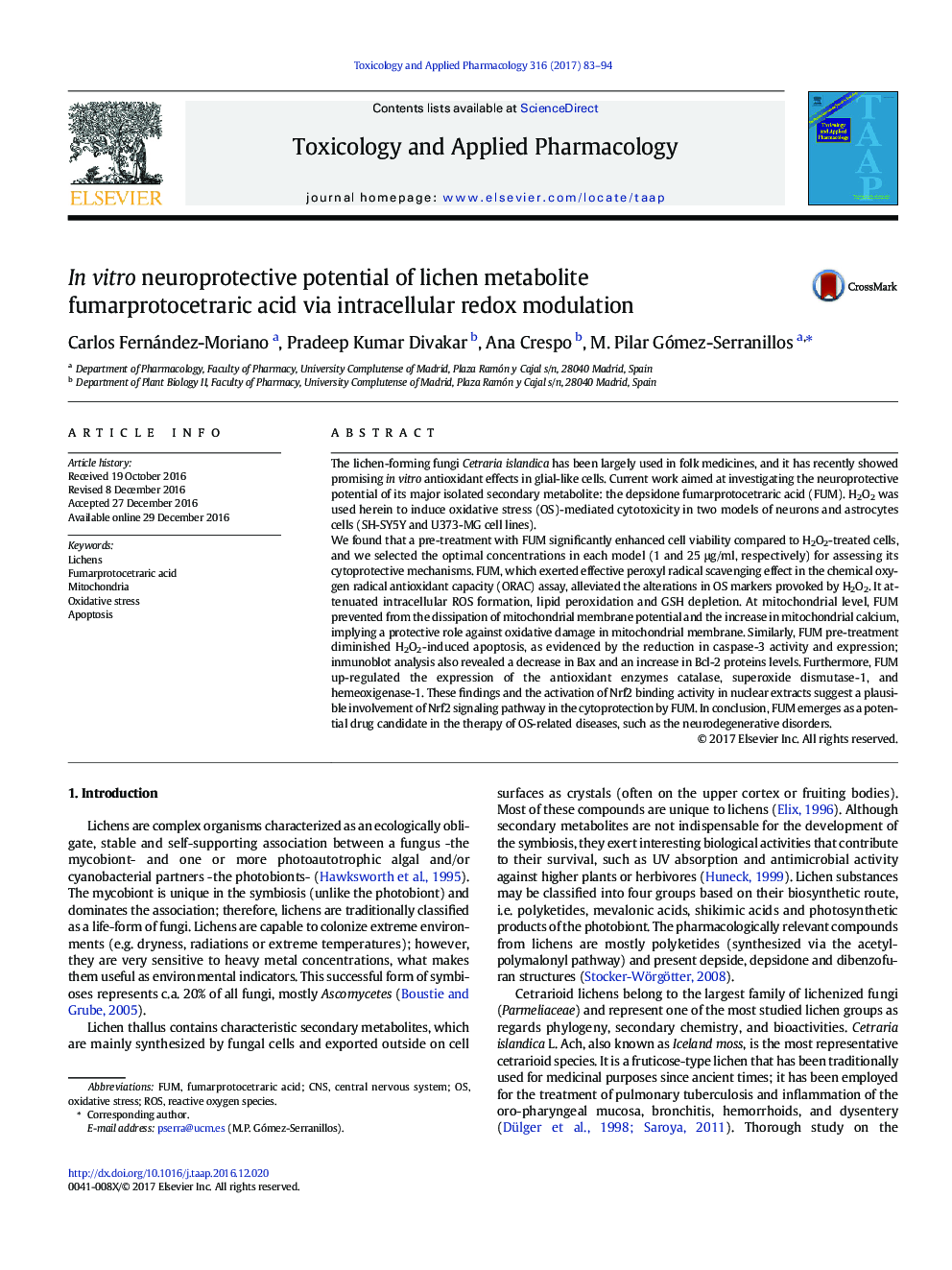| کد مقاله | کد نشریه | سال انتشار | مقاله انگلیسی | نسخه تمام متن |
|---|---|---|---|---|
| 5558505 | 1561146 | 2017 | 12 صفحه PDF | دانلود رایگان |
- FUM pre-treatment exerts significant cytoprotection against H2O2-mediated apoptosis.
- ROS scavenger and mitochondria-targeted effects mediate its antioxidant properties.
- A plausible involvement for the cytoprotective Nrf2 pathways is suggested.
The lichen-forming fungi Cetraria islandica has been largely used in folk medicines, and it has recently showed promising in vitro antioxidant effects in glial-like cells. Current work aimed at investigating the neuroprotective potential of its major isolated secondary metabolite: the depsidone fumarprotocetraric acid (FUM). H2O2 was used herein to induce oxidative stress (OS)-mediated cytotoxicity in two models of neurons and astrocytes cells (SH-SY5Y and U373-MG cell lines).We found that a pre-treatment with FUM significantly enhanced cell viability compared to H2O2-treated cells, and we selected the optimal concentrations in each model (1 and 25 μg/ml, respectively) for assessing its cytoprotective mechanisms. FUM, which exerted effective peroxyl radical scavenging effect in the chemical oxygen radical antioxidant capacity (ORAC) assay, alleviated the alterations in OS markers provoked by H2O2. It attenuated intracellular ROS formation, lipid peroxidation and GSH depletion. At mitochondrial level, FUM prevented from the dissipation of mitochondrial membrane potential and the increase in mitochondrial calcium, implying a protective role against oxidative damage in mitochondrial membrane. Similarly, FUM pre-treatment diminished H2O2-induced apoptosis, as evidenced by the reduction in caspase-3 activity and expression; inmunoblot analysis also revealed a decrease in Bax and an increase in Bcl-2 proteins levels. Furthermore, FUM up-regulated the expression of the antioxidant enzymes catalase, superoxide dismutase-1, and hemeoxigenase-1. These findings and the activation of Nrf2 binding activity in nuclear extracts suggest a plausible involvement of Nrf2 signaling pathway in the cytoprotection by FUM. In conclusion, FUM emerges as a potential drug candidate in the therapy of OS-related diseases, such as the neurodegenerative disorders.
Journal: Toxicology and Applied Pharmacology - Volume 316, 1 February 2017, Pages 83-94
